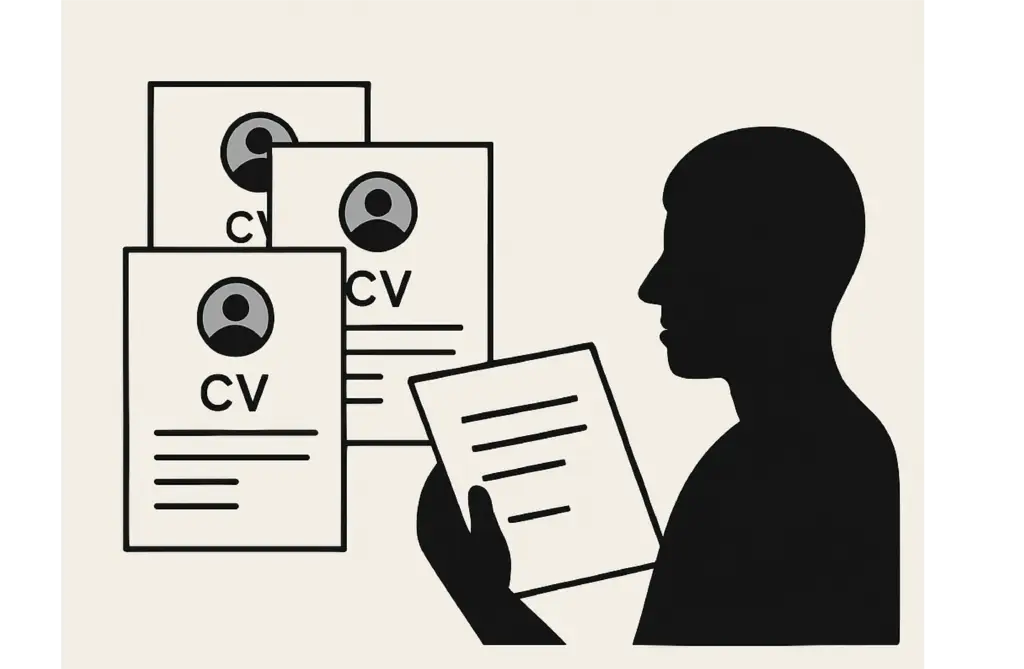When I started applying for scholarships, I thought I had it all figured out. My academic record was solid, my intentions were clear, and frankly, I believed qualifications alone would open doors for me.
So when it came to writing a CV, I didn’t think twice.
I found a beautifully designed template online—the kind with neat sections and modern fonts. All I had to do was plug in my details, change a few words here and there, and just like that, I had what I thought was a polished CV.
What I didn’t realize was this: I was unknowingly burying my chances.
My applications felt off. My CVs, though visually appealing, didn’t feel mine. They lacked a voice. They read like someone else’s story dressed in my achievements. At the time, I couldn’t quite put my finger on it—but I would soon learn why.
A few months later, I attended a seminar with recruiters who specialized in academic and professional placements. One line hit me like a freight train:
“We can smell a templated CV from a mile away.”
They said it with the same certainty as someone talking about the weather. To them, these CVs reeked of minimal effort. And more often than not, those applications were tossed aside.
I was stunned.
Here I was, thinking my clean, structured CV was helping me—when in reality, it was working against me.
This was a wake-up call.
The Hidden Problem with Templates
CV templates aren’t evil. They can offer structure, and for first-timers, they can be incredibly useful. But relying on them too much? That’s where the danger lies.
Because templates aren’t neutral—they come with baggage.
They’re designed with a particular narrative in mind: a linear, traditional career path. Maybe they favor technical roles. Maybe they assume years of consistent experience. But if your story doesn’t fit that mold—if you’ve switched careers, had gaps, or followed a non-traditional path—these templates can end up highlighting your weaknesses instead of your strengths.
Worse still, they can make your brilliance invisible.
The Cookie-Cutter Trap
Here’s the truth: a lot of people are using the same five templates. Recruiters see the same layout, same font, same phrasing—over and over again.
Your achievements might be incredible, but if they’re presented in the same bland format as everyone else’s, they’ll blend into the background.
In today’s hyper-competitive environment, the last thing you want is to look like everyone else.
Standing out doesn’t mean being flashy. It means being real. A CV should sound like you. It should reflect your thinking, your values, your growth. Templates can’t do that. Only you can.
When Your Story Gets Lost
Templates often ask you to list roles, not stories. They want job titles, not journeys. But what if your story is the very thing that makes you special?
What if you overcame the odds to finish school, or pivoted from a science background into tech? What if you built something from scratch, mentored others, or sparked change in your community?
These stories don’t fit neatly into bullet points. And yet, they’re often the most powerful part of your application.
Templates prioritize structure over authenticity. But it’s your authenticity that wins hearts—and scholarships.
“Looking like everyone else is the fastest way to be forgotten.”
A Poor Fit for the Role
Another major problem? Templates assume all jobs and scholarships are created equal. They aren’t.
A one-size-fits-all format often fails to highlight what a specific opportunity is really asking for. A research position might call for a breakdown of your scientific contributions, while a leadership scholarship might care more about community impact and influence.
Templates don’t guide you to adapt. They ask you to conform. And that can create a mismatch between what you submit and what the committee actually wants to see.
Your CV should be built around the opportunity—not the other way around.
The Illusion of Effort
Finally, there’s perception.
Even if you are qualified… even if you do care… a heavily templated CV can make it seem like you didn’t try.
That’s harsh, but it’s true.
Customization shows care. It shows intentionality. It tells the reader that you took the time to understand what matters to them. And that’s powerful. Because people don’t just hire skill—they hire interest. They award scholarships to candidates who show up fully.
So, What Should You Do Instead?
Start with your story.
Ask yourself: What value do I bring? What am I most proud of? How does my journey connect with this opportunity?
Then build your CV from there—yes, even if it means breaking traditional structure. Highlight your strongest experiences first. Reorder sections if it helps your story flow better. Add context where needed. Quantify your impact. Let your personality shine through.
Templates can still be a starting point. But your final draft should feel like you on paper—not a recycled version of someone else.
Because your CV is more than a document. It’s your first impression, your story, your value proposition.
Don’t hand that over to a template. Take control of it. Own it. Write it with clarity, courage, and care.
“If your CV doesn’t sound like you, it’s not working for you.”
To Your Success and Beyond
@Dr. BM Enuh
I help prospective scholarship applicants write crisp and compelling CVs tailored to their unique strengths and coherent with their applications. Contact me on facebook or send me a message to find out more.
Check out my previous article on common mistakes candidates make in their CVs here

Wow, powerful insights here on how to craft a CV tailored to the needs and expectations of the recruiters. Thanks doctor.
You are welcome. Looking forward to your feedback on how you used the tips.